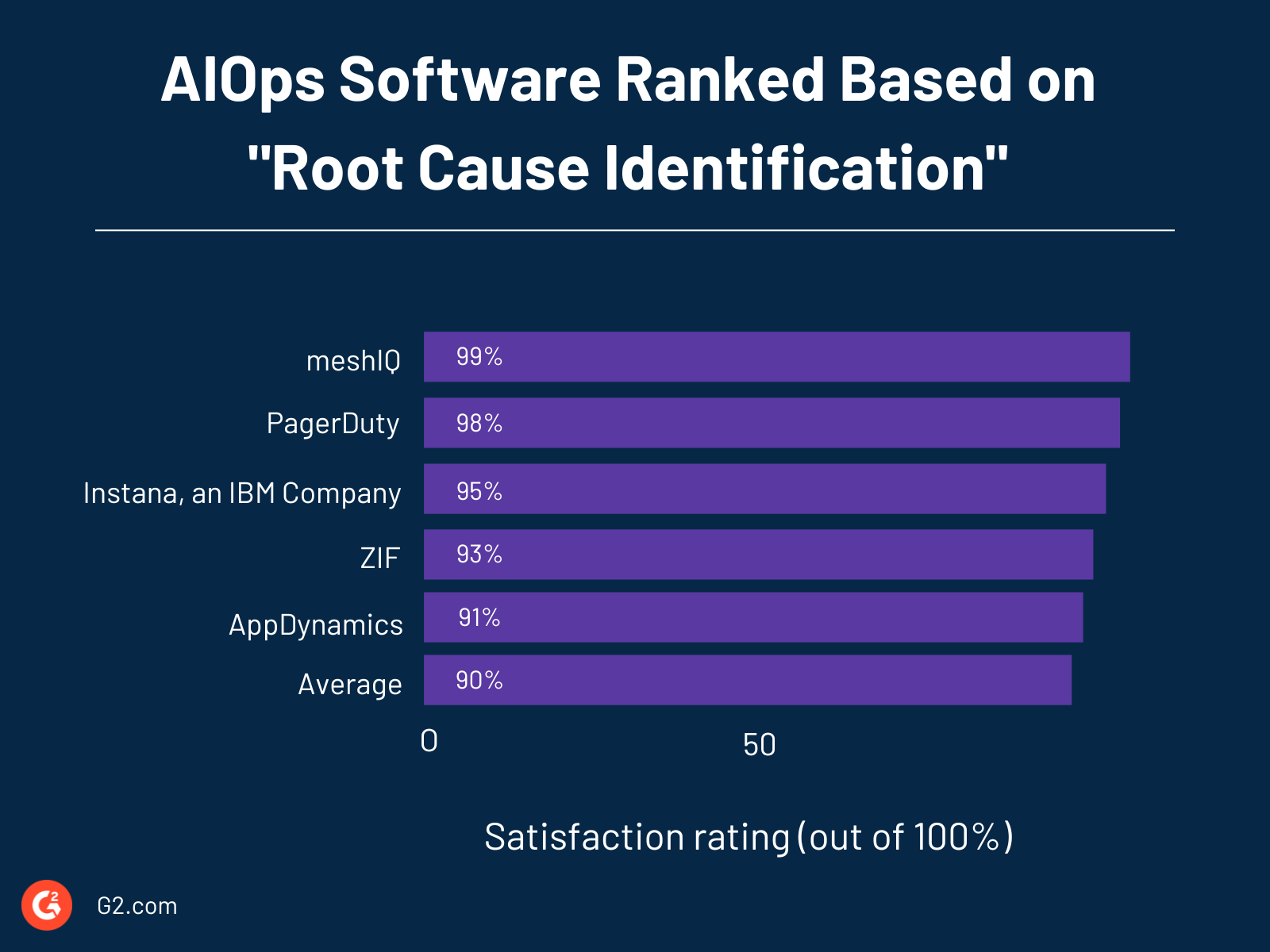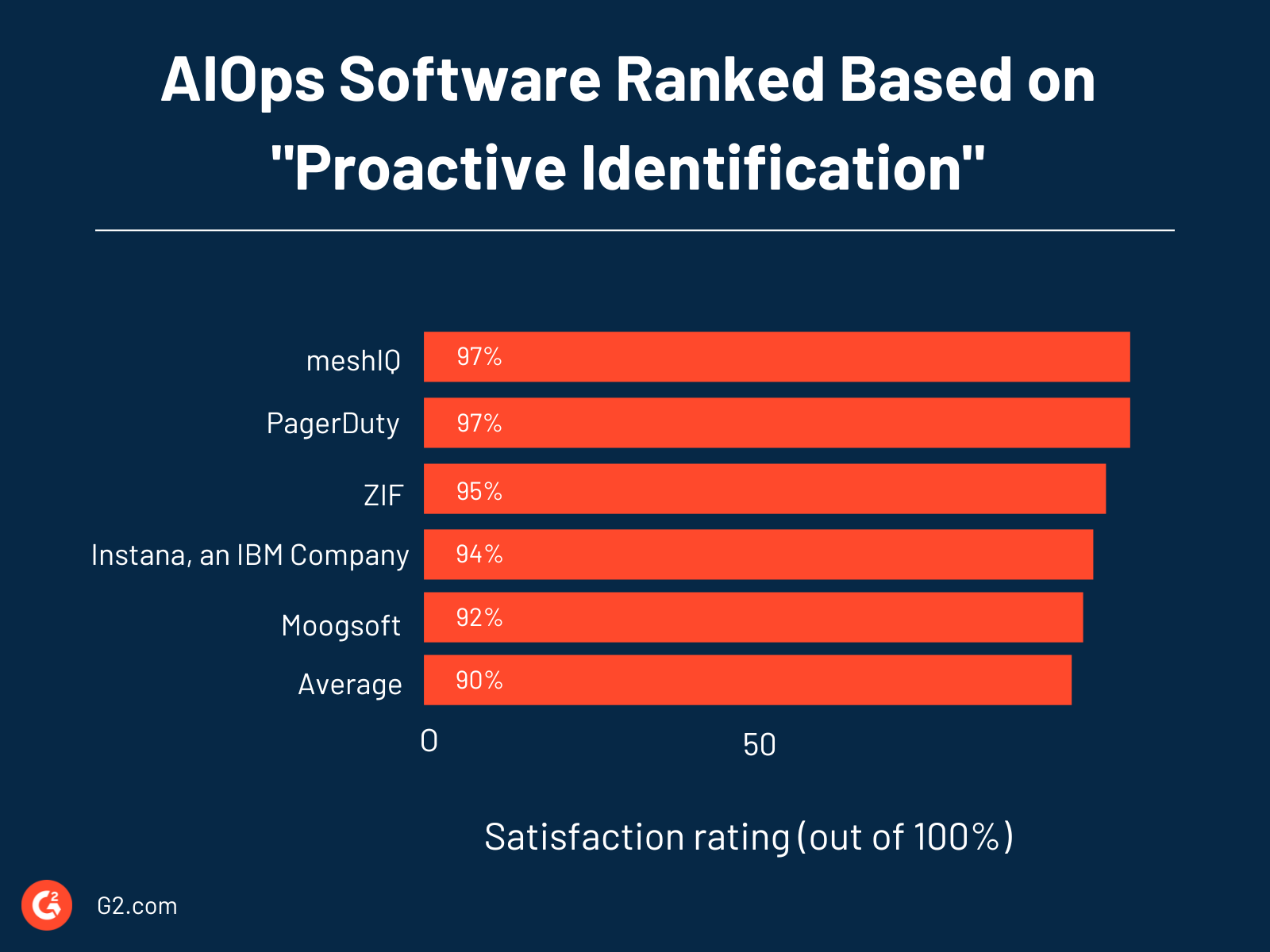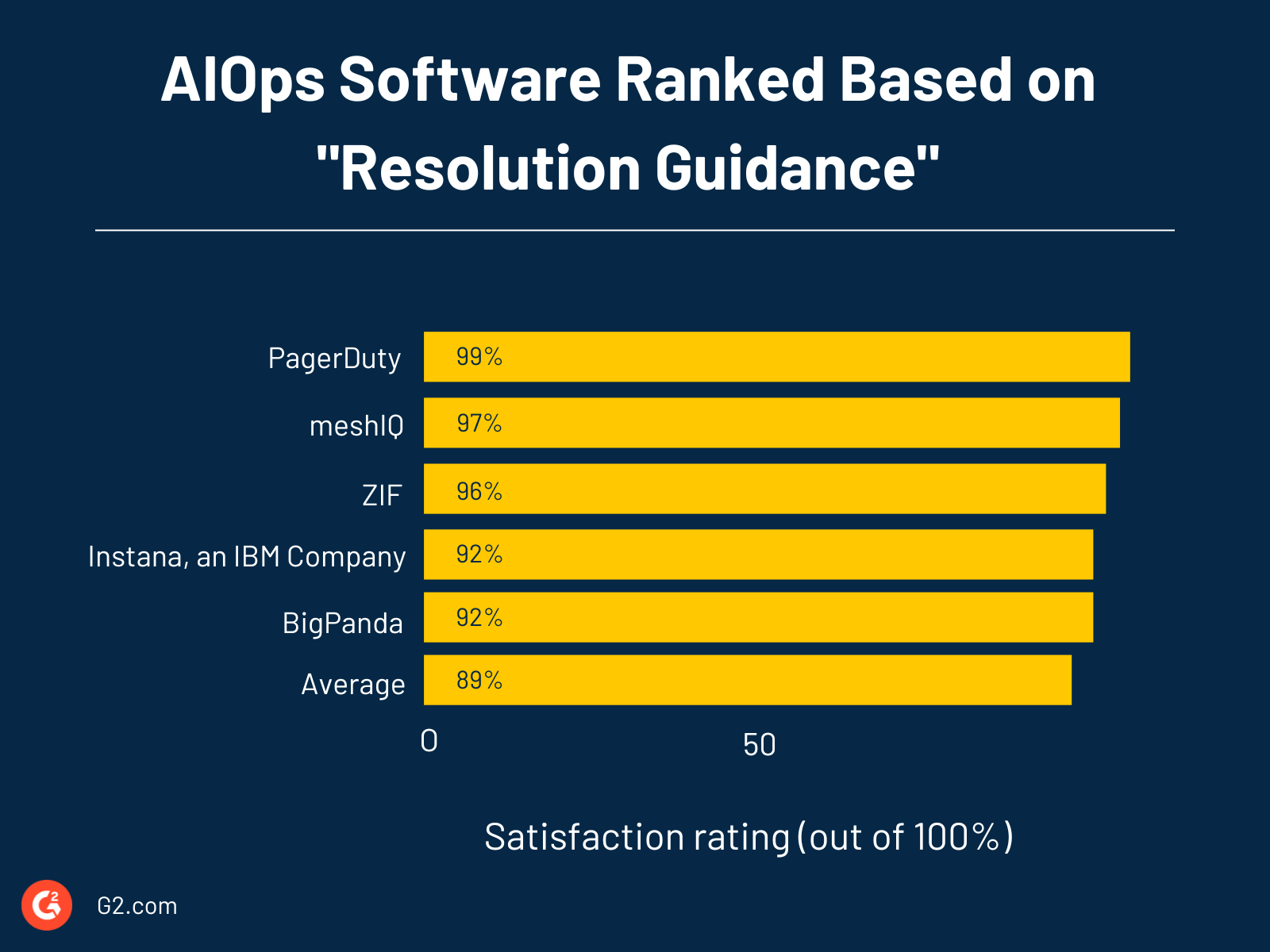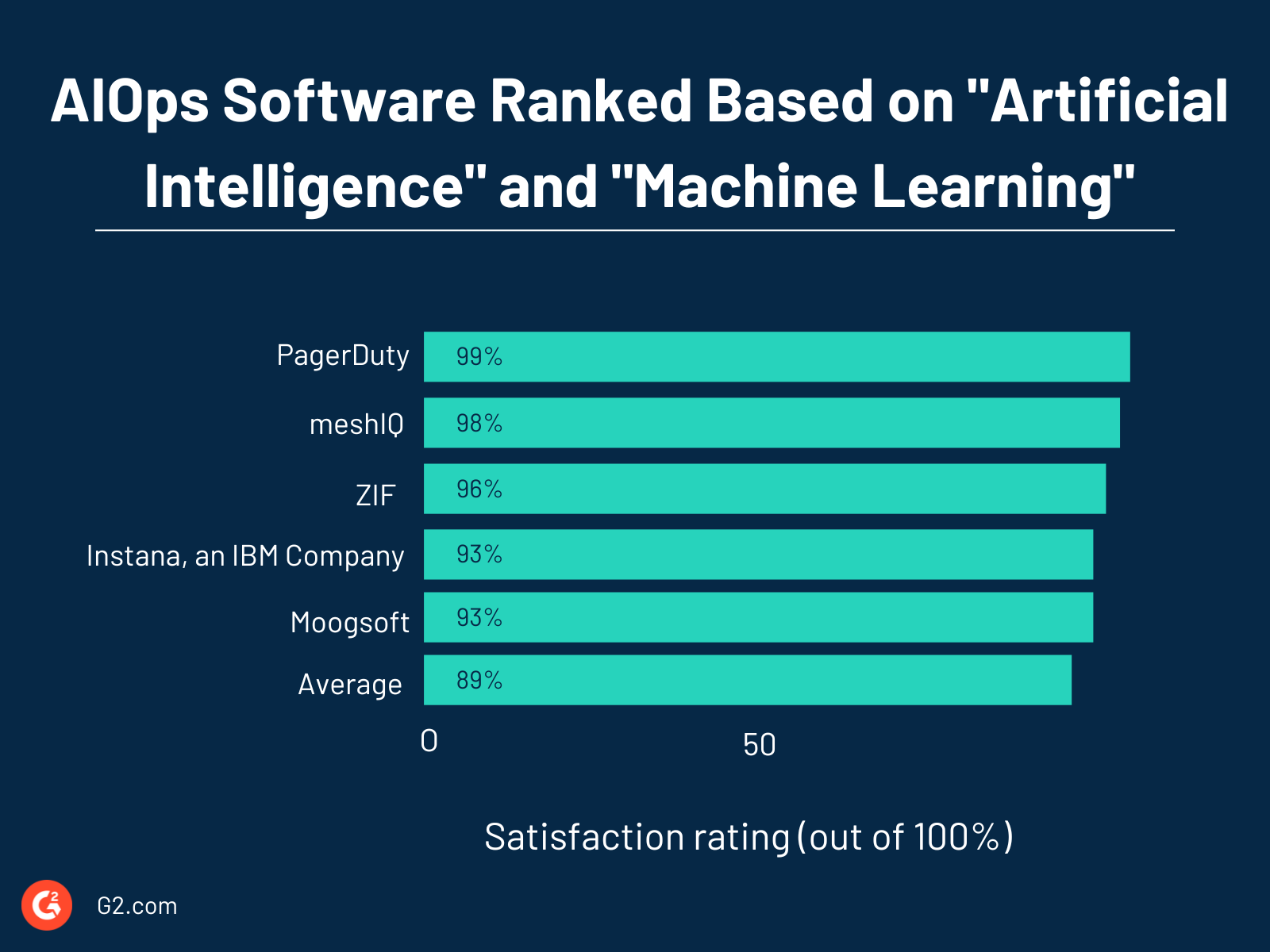AIOps platforms have shifted IT teams' responsibilities with the integration of artificial intelligence (AI) and machine learning (ML) to automate IT operations, proactively monitor and analyze systems, and improve performance.
While implementing AIOps is complex and time consuming, companies are turning to software solutions to simplify the process. This article aims to explore the key features of AIOps software and provide tailored software recommendations.
AIOps is a revolutionary approach to IT operations
Every company has unique needs, challenges, and goals that require a tailored AIOps setup. For instance, a financial institution might want to ensure secure, high-speed customer transactions, requiring the IT team to prioritize monitoring and optimizing network performance. In contrast, a healthcare company might require the IT team to focus on monitoring and detecting anomalies in medical device data, ensuring patient safety and regulatory compliance.
To address these unique needs, IT managers must select the right AIOps software. Most AIOps solutions offer features such as real-time analytics, automated incident response, and predictive maintenance, but choosing the right combination of features and functionalities can be challenging.
AIOps software should be customizable and integrate seamlessly with other business software to meet the company's specific IT requirements. Therefore, companies must carefully evaluate their options and choose an AIOps solution that fits their unique needs and goals.
¿Quieres aprender más sobre Herramientas de Monitoreo del Rendimiento de Aplicaciones (APM)? Explora los productos de Monitoreo del Rendimiento de Aplicaciones (APM).
How AIOps can help tackle common challenges faced by IT professionals
Based on the OpsRamp State of AIOps 2023 survey report, 265 IT professionals mentioned the top three incident management challenges:
- Understanding application to infrastructure dependencies for an IT outage (62%)
- Determining probable root cause analysis (56%)
- Ensuring rapid mean-time-to-resolution (MTTR) for business-critical services (50%)
Interestingly, these three challenges need to be addressed together.
Understanding application to infrastructure dependencies is crucial for AIOps because it enables IT teams to quickly diagnose and resolve IT outages. When an IT outage occurs, it can be challenging to pinpoint the root cause of the problem.
However, by understanding the relationship between applications and infrastructure, IT teams can more easily identify the source of the issue and take appropriate action to fix it. AIOps uses ML algorithms to monitor IT systems and detect anomalies in real time.
By analyzing data from various sources, such as logs, metrics, and events, AIOps can identify patterns and correlations that might indicate a potential outage. However, to effectively diagnose the problem, IT teams need to understand the complex dependencies between applications and infrastructure.
For instance, if a critical application suddenly stops functioning correctly, it could be due to an issue with the underlying infrastructure, such as a network or database. Without understanding these dependencies, IT teams may waste time investigating the application itself, leading to delays in resolving the outage. By having a comprehensive understanding of application-to-infrastructure dependencies, AIOps can provide more accurate insights and recommendations to IT teams, enabling them to quickly identify and fix the root cause of an outage. Only then can organizations ensure MTTR through AIOps.
Recommending AIOps platforms based on G2’s GridⓇ Report data
The Spring 2023 G2 GridⓇ Report for AIOps Platforms can help software buyers find the right software based on Root Cause Identification, Proactive Identification, Resolution Guidance, and Artificial Intelligence and Machine Learning.
Root cause identification
AIOps tools can directly identify the root cause of IT system issues or increase the speed at which they are identified. This is achieved by leveraging algorithms to analyze data from various sources, such as logs, metrics, and events. To address this, G2 asks reviewers to rank AIOps software based on “Root Cause Identification." The top five tools by this metric are mentioned below.

With a category average of 90%, meshIQ leads by 98%, followed by PagerDuty, Instana, ZIF, and AppDynamics. ITOps professionals who want AIOps software to focus on this feature should explore these five products.
Proactive identification
AIOps solutions can proactively identify trends in IT systems that may lead to failures or errors. It then provides recommendations to IT teams to optimize their systems based on the analyzed data. This enables IT teams to take proactive steps to prevent incidents from occurring in the first place. To address this, G2 asks reviewers to rank ITSM software based on “Proactive Identification." Below is the ranking for the top five.

With a category average of 90%, meshIQ leads by 98%, followed by PagerDuty, ZIF, Instana, and Moogsoft. ITOps professionals who want AIOps software to focus on this feature should explore these five products.
Resolution guidance
AIOps platforms not only identify root causes and trends for IT system issues but also provide paths, suggestions, or other general assistance toward issue resolution. By analyzing data from various sources, AIOps can provide IT teams with recommendations on resolving the issue or suggest a path toward the solution.
These recommendations may include automated responses, suggested manual interventions, or alerts to specific teams for issue resolution. This helps IT teams respond to incidents more quickly and effectively, reducing downtime and increasing system performance. To address this, G2 asks reviewers to rank AIOps software based on “Resolution Guidance." The top five solutions by this metric are mentioned below.

With a category average of 90%, PagerDuty leads by 99%, followed by meshIQ, ZIF, Instana, and BigPanda. IT Ops professionals who want AIOps software to focus on this feature should explore these five products.
Artificial intelligence and machine learning
In the world of AIOps, both AI and ML are used to enable intelligent systems that can analyze data and provide insights to IT teams. AI in AIOps involves a broader set of techniques, such as expert systems, rule-based systems, and natural language processing. At the same time, ML algorithms are specifically used to analyze data from various sources to identify patterns and correlations that may indicate a potential issue.
These algorithms can then make predictions or decisions based on those patterns, which can help IT teams take proactive steps to prevent or respond to incidents more effectively. To address this, G2 asks reviewers to rank AIOps software based on “Artificial Intelligence" and “Machine Learning.” Below is the ranking for the top five.

With a category average of 90%, PagerDuty leads by 99%, followed by meshIQ, ZIF, Instana, and Moogsoft. IT Ops professionals who want AIOps software to focus on this feature should explore these five products.
ROI must be top of mind
Return on investment (ROI) is an essential consideration when purchasing AIOps software because it allows organizations to measure the value of the software against the cost of implementation. With the increasing complexity of IT systems, AIOps software can help organizations streamline operations, reduce downtime, and improve incident response times. However, the software can also be costly, and organizations must evaluate whether the benefits outweigh the investment.
ROI analysis helps organizations understand the potential benefits and costs associated with implementing AIOps software and can be used to make informed decisions about whether to invest in the technology. Additionally, ROI analysis can help organizations justify the investment to stakeholders and ensure that the software meets their needs and goals.
This is where G2 data and the OpsRamp survey significantly differ. The OpsRamp survey conclusion claims that AIOps has an “ROI within six months.” While according to G2 Small-Business, Mid-Market, and Enterprise Spring 2023 G2 GridⓇ Report for AIOps Platforms, the ROI is significantly longer:
- Small-Business - 12 months
- Mid-Market - 17 months
- Enterprise - 18 months
Lengthy ROI periods for software purchases can be problematic because they indicate that the investment will take a long time to pay off, which can be a concern for organizations with limited resources and make it difficult to justify the investment to decision makers. Companies must carefully test AIOps software after implementation to determine if the software is worth the investment.

Tian Lin
Tian is a research analyst at G2 for Cloud Infrastructure and IT Management software. He comes from a traditional market research background from other tech companies. Combining industry knowledge and G2 data, Tian guides customers through volatile technology markets based on their needs and goals.
